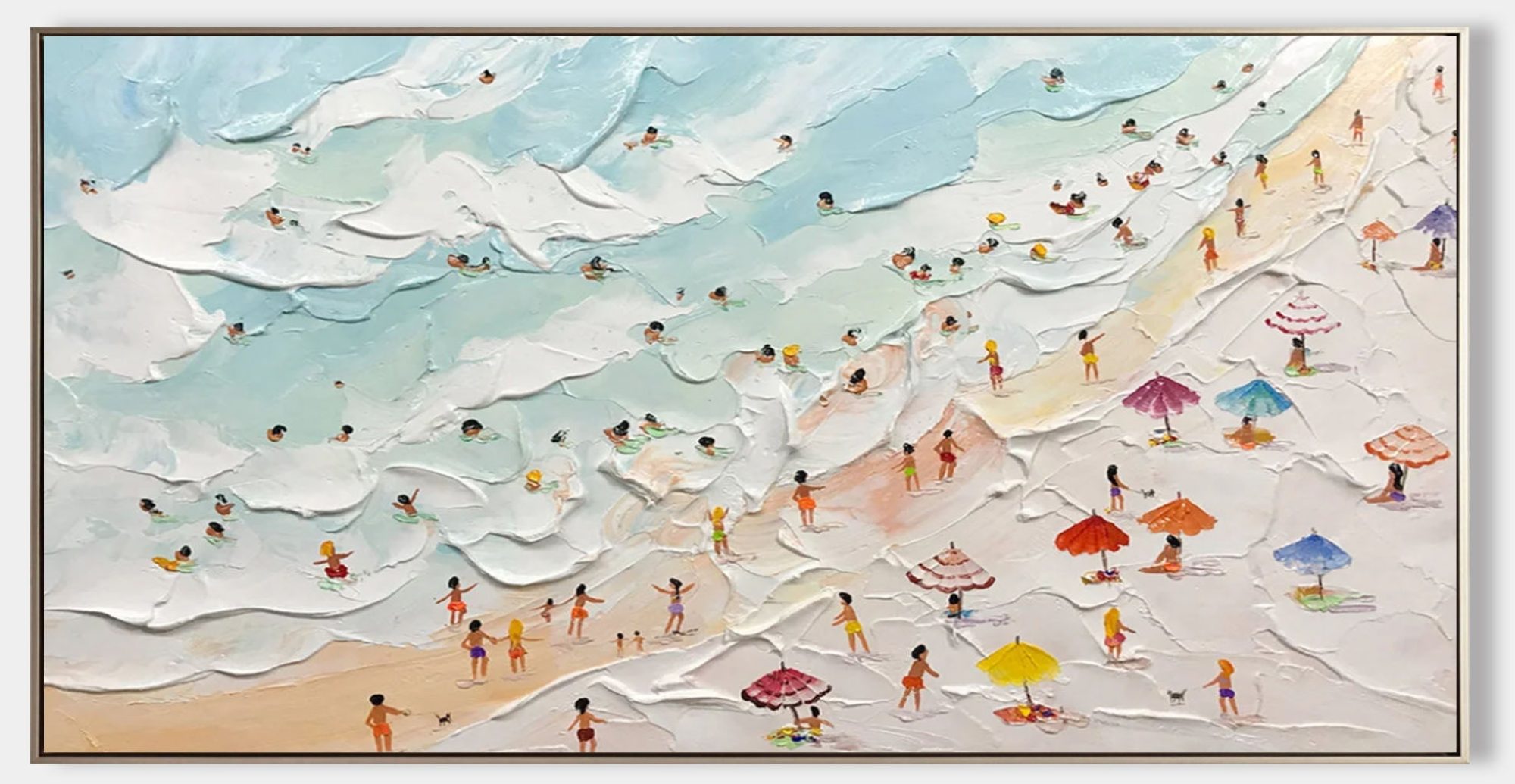Beaches offer a rich tapestry of textures, from smooth sands to rugged rocks. Capturing these elements in oil painting adds authenticity to your seascapes. “Deep Green Sea Textured Painting” showcases the effective use of texture to depict a lifelike shoreline.
Observing Beach Elements
Study the various components of a beach: wet and dry sand, pebbles, shells, and driftwood. Each has a unique texture that can be replicated with specific techniques.
Materials Needed
- Canvas: Primed and ready for oil paints.
- Oil Paints: Burnt Umber, Yellow Ochre, Titanium White, and others for detailing.
- Tools: Palette knives, coarse brushes, sponges.
Techniques for Sand Texture
Use a mix of sand and paint or modeling paste to create a gritty texture. Apply with a palette knife, varying the pressure to mimic natural undulations in the sand.
Incorporating Beach Debris
For elements like shells or driftwood, use fine brushes to add intricate details. Highlighting and shading are crucial to make these objects stand out against the sandy background.
Blending with the Ocean
Ensure a seamless transition between the beach and the ocean. Gradually blend the sandy textures into the wave patterns, maintaining consistency in lighting and color tones.
